 It was November 13th when I found out about Project Greenlight’s Get The Greenlight Digital Series Contest.
It was November 13th when I found out about Project Greenlight’s Get The Greenlight Digital Series Contest.
Get the Greenlight solidified that Michael and I should next-level a series we’d been developing for a couple years. The only problem: the pitch was due November 25th.
By the time we decided to go ahead, we had a little less than a week and a half to:
- Narrow down our development history for our series, Bison Island.
- Craft a pitch (3 minute or less) that met Greenlight’s criteria.
- Stand out in the crowd.
- Make the deadline!
We did end up being picked for the Top 20 semi-finals! Public voting is ongoing until December 18th and you can click here to view our pitch and vote!
Our video was produced in roughly 10 days, and I want empower other filmmakers: if you think a timeline is too tight or the odds are too slim, you can do it! In this post, you’ll see everything from our schedules to our shot lists and overall productivity philosophies and hacks!
The most crucial questions to ask before entering a pitching contest like Get the Greenlight are:
Does your story fit the contest’s criteria, and do you believe in it?
THE STORY
There’s some information here on how the original story of Bison Island came to be, so I won’t belabor it here.
I would never have walked into a contest or pitch like this without knowing my story, characters, arc, and episodic structure well. When writing a feature script from thin air, my general rule is “the less I know the better.”
Pitching is entirely different: pitches are marketing pieces: storytelling with a clear call to action.
The story was clear in mine and Michael’s heads, but could it be concisely and rivetingly distilled and translated to a curious audience?
We didn’t have time to bounce this around and find the answers on our own; we were roughly 10 days away.
TIME’S NOT ON OUR SIDE, NO IT’S NOT
“If I had an hour to solve a problem I’d spend 55 minutes thinking about the problem and 5 minutes thinking about solutions.” -Albert Einstein
Preparation is the best use of time for filmmakers on a tight schedule. More time prepping equals less time struggling through the more involved and volatile steps.
We would need to film the weekend of November 21st and 22nd. This would only allow a couple days for post, but if the pitch was tight and we’d planned adequately, shooting and editing would be plug-and-play.
I decided on something counter-intuitive: It would be best to spend the weekend of the 14th-15th (1 week before our shoot) doing absolutely nothing.
By keeping our minds off the pitch for a couple days, we were able to fight through any sense of anxiety, level off, and come back fresh the following week.
Monday the 16th, I made a schedule that looked like this:
- Monday 16th: Solidify schedule, write Bison Island Synopsis, rough out pitch.
- Tuesday 17th: Meet on story and pitch points.
- Wednesday 18th: Refine pitch and structure.
- Thursday 19th: Solidify pitch, shot list, review pitch with Mike, lock locations.
- Friday 20th: Finalize shoot schedule, lock talent, finalize pitch.
- Saturday 21st: Shoot pitch and B-Roll, edit rough cut.
- Sunday 22nd: Shoot pickups, complete full rough cut.
- Monday 23rd: Lock first draft video, send out for notes.
- Tuesday 24th: Review notes, lock picture, gather additional assets, SUBMIT!
With the schedule in place, it was time to find our voice in the crowd.
TRUSTED VOICES
Given a few extra weeks I might have sent out a draft pitch to friends and family, asking, “what jumped out as most intriguing?”
The clock was ticking and I needed clarity, so I consulted a longtime collaborator—someone I know has an understanding and love of storytelling that equals mine, but can often differ in tone.
Josh wrote with Mike and I years ago, and we loved working with him. I invited him over to have a couple drinks and spitball the story with me, which he obliged on Tuesday the 17th, 8 days before the due date.
What was supposed to take an hour lasted four, as I explained the contest, parameters, audience, and ultimately the story of Bison Island.
He responded with challenges, interests, and curiosities. He put a lot in perspective and helped me focus on the selling-points, for the sake of the pitch.
On my own this distillation may have taken months. By bringing in a trusted third-party with no frame of reference, it was done in a couple hours, the story was stronger, and I was confidently ready to get writing on the pitch!
I knew how to sell this thing.
CRAFTING THE PITCH
Tuesday morning, before meeting Josh, I combed Project Greenlight and Project Greenlight Digital Studios’ Facebook page, where I discovered this:
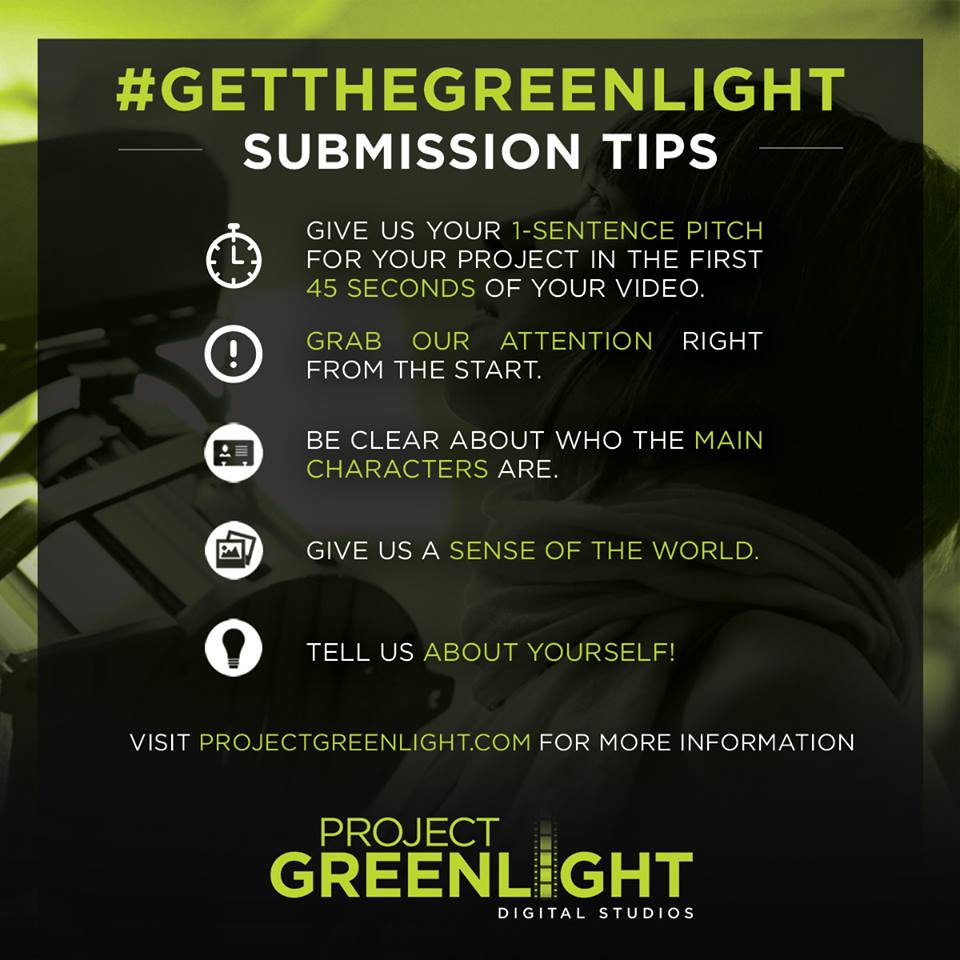
A simple path to success: follow these guidelines, riff on each, and you’re that much closer to being noticed and appreciated.
Rules and guidelines should be followed religiously in a contest. Let art fill in the gaps, but take as few risks and liberties as possible with structure. Don’t try and reinvent the wheel.
I began drafting, focusing first on the logline: our one-sentence synopsis that would appear in the first 45 seconds. If I could nail that, the rest would fall into place.
I spent much of Tuesday on the logline, refining draft after draft and sending new versions to Josh and Michael for input. When there were no notes from either of them and I had cut every piece of fat possible, I moved on from the logline.
Wednesday was spent adding the remaining pitch verbiage, and using my phone’s stopwatch to time myself reading. Draft number one took 6 minutes to get through at a fast pace. There was much to be done.
Thursday, I reorganized some information and carved out a great deal of extraneous words, descriptions, and sentences. My key M.O.: if it can be said in three words, why say it in seven?
By the end of Thursday, I was down to 3.3 minutes.
I now knew what would definitively be included in the video; edits were simply for structure. This allowed me to create a refined shot list, and narrow down who would need to be on screen, besides Michael and myself: a young boy, and a woman in her twenties.
That night I got in touch with the mother of one of my stepmom’s rowing students, who agreed to have her son, Milo Elliot, play the boy.
I also reached out to my good friend Fiona to play the young woman, promising it would take under an hour and we’d come to her. I loosely scheduled both shoots for Saturday.
I’d narrowed down a list of 3 outstanding props I needed:
- Old-time diary
- Human skull (passably real when covered in dirt)
- Handkerchief
Now, I’m lucky: my girlfriend is a stylist. I asked if she’d help me find these things on her day off, and she agreed.
That night I met Mike to review the pitch. He gave me a few notes to trim some time, I chopped most of them, restructured some, timed myself reading it, and we were down to 3 minutes on the dot.
Leaving the bar, we noticed a Missing Person poster hanging from a bulletin board and thought that would make a great addition to our video, so I added it to the prop list.
Friday, with shooting the following day, I nailed down locations, edited the pitch down to 2.6 minutes, and shared it with Mike.
All the equipment we’d use was ours or within our possession, so I organized it, charged batteries, and did an inventory.
I scheduled our shoot with Milo for Saturday at 9am at a park about 5 miles from my house, and told Fiona we’d be over Saturday afternoon/evening. I broadly told them what to wear.
We planned to get additional shots of Government Island (Bison Island in our story), the skull being dug up, the Missing Person poster, and any other pickups on Sunday afternoon.
I looked up a few Missing Person posters, grabbed a picture from Fiona’s Facebook, and made the one in 10 minutes.
Friday night I came home to my girlfriend presenting me with the most perfect diary, and giving me price quotes on skulls and handkerchiefs she could pick up Saturday or Sunday, in time for shoots on Sunday.
4 days until the deadline, and the blueprint was clear. Now we just had to execute.
MAKING IT HAPPEN
Here are the specifics of how each prepared item benefited our process, and how preparations like this can benefit your work:
The Shot List
Plan every shot you know you’ll need and only shoot extra if it’s better than what you’d planned or you have extra time. When you’re working on a tight timeline, the fewer options you have in post, the faster you can lock picture.
Focus on getting good images that push your presentation ahead.
Here’s my shot list for the Bison Island pitch, based on the written script:
- CU (Closeup) – TC Elliot’s eyes
- MED (Medium Shot) – TC Elliot’s face
- WIDE – TC Elliot running
- CU – Emily looking eerie
- WIDE – Push in on Emily from the back
- WIDE – Track through forest
- WIDE – Pull back through forest
- WIDE – Push ahead through forest
- CU – Skull in ground, wiped off by handkerchief
- CU – Skull lifted from ground
- CU – Missing Person poster
- CU – Bottle of booze/empty glass on nightstand
- MED – Broken glass on floor
- WIDE – Bison Island
- MED – Bison Island
- CU – Long lens on Bison Island
- WIDE – School hallway
- CU – Diary
- INSERTS – Diary handwriting
I arranged these 19 setups by location and scheduled them.
Some shots got skipped, if a better opportunity arose. For instance, I remembered I had a pocket dolly and replaced the shots of Bison Island with dolly shots, instead of static ones on a tripod.
Talent
For quick shoots with very little money, you’ll likely use non-actors. Structure onscreen roles that require little nuanced performance or time.
Milo had modeled and was familiar with shoots. He’s also a super mature and courageous kid, which made our rapid shoot easy.
Fiona had never acted before, but I knew she could achieve what I needed if I framed her correctly and made her comfortable, which was part of why we did the shoot at her home.
When shooting with talent, be sure to get onscreen release forms signed. It’s important to cover your bases, and printing these releases should be done well in advance.
Locations
Try maintaining a few rules while finding and shooting locations:
- Shoot as close to home as possible.
- Try to ensure your locations are all within about 20-30 minutes drive of each other.
- Shoot what you know: places you’ve been and know how they’ll translate.
Early on, we’d discussed a quick trip to Fort Vancouver in Washington: a standing pioneer fort in a national park. Mike reminded me that the 40 minute drive-time, parking, paying for entry, scoping the place, and getting a few shots would take too long for the amount of screen time it would occupy. Scrapped!
Keep it simple. If you can’t, find something new.
PHOTOGRAPHY
Most filmmakers have access to equipment, whether their own or a friend’s. The majority of our pitch was shot using my own equipment, and some from the company I work for—including the small studio where we filmed the pitch.
We worked with what was available and, in this case, we were pretty lucky.
Work within your scope and put quality first. Ask:
“How can we get the best possible product with the least possible expense or time?”
Here’s how that shook out for us, and what it would cost to replicate our setup with rentals, if you wanted to go that rout:
The Studio
The small green screen studio we used employs a simple setup, including an iPad-based teleprompter system. I got permission to use it on Friday and we were in there for 3 hours on Saturday. Having supportive co-workers and management goes a long way!
The studio has fixed lighting. There were very few adjustments and no additional gear to bring, which saved time and money. I’m also in there constantly, so I know the workflow well.
Here’s an estimation of what it would take to re-create that studio setting. Costs are based on a local rental house in Portland Oregon, Pro Photo Supply: (full disclosure, these are affiliate links)
- Canon XF100 – $100
- Elite Prompter app – $9.99
- Sennheiser ME66 mic – $50
- Basic light kit – $80-100
- Kino Flo Diva – $80-100
- Green Screen w/ stands – $50
TOTAL: $369-409
The studio is also rigged with sound baffling foam, which can be cheated on a location by hanging quilts or thick blankets against walls with thumb tacks.
Mike and I did take after take until we could get through the whole pitch in a single run. By the end, I knew I’d use one of the final 3 takes. Cutting the 2.5 minutes of studio footage took 10 minutes.
Again, the more solid your script, the easier your shoot will go. I’d spent more time with it than Michael, so I could coach him on rhythm and speed. Had Michael been given a more preparation time, we could have been done in an hour.
The Field
Based on the shot list I knew which lenses and gear would be required at each location.
Again, most filmmakers have gear at their disposal. Here’s exactly what we used with rental estimates from Pro Photo Supply: (full disclosure, these are affiliate links)
- Steadicam Merlin – $50
- Canon 5D Mk iii – $175
- Tokina 11-16mm – $25
- Canon EF 50mm 1.2 – $30
- Canon EF 70-200mm 2.8 – $30
- Pocket Slider – $25-50
- Tripod – $10-30
TOTAL: $345-390
The camera body, 50mm, and Tokina lenses were constantly with me. The Steadicam Merlin is lightweight enough that I’d bring it to most locations. I generally had a tripod with me as well.
Other gear was optional, based on location and shot list requirements. Here’s how each day went down:
Day 1 – Saturday, The Video Pitch
We started with Milo’s shoot. I used the Tokina and Canon 50mm lenses, tripod, and Steadicam Merlin. Between the small hike to the location, shooting, and the hike back, this took around 40 minutes.
After Milo, Michael and I hiked back into the woods to get the forest shots with the Merlin and two lenses. This took around 30 minutes, saving an hour or more on Sunday—when I’d planned to shoot in another set of woods.
On the way to lunch, we stopped at a local venue—a decommissioned high school—and got the hallway shot. I also grabbed some audio of dissonant piano keys from a piano in one of the hallways, using my phone. Those keys would be used in the score. All told, 25 minutes.
After the studio shoot, we closed out the day at Fiona’s house: a low-key 40 minutes shooting two shots: one with the Tokina mounted on the Merlin, and the second with the 70-200mm on sticks. That was the end of day 1.
Day 2 – Sunday
The day started with a trip to Marine Drive, where our island can be seen from Portland’s shore.
I found a good vantage point, parked, and brought all three lenses, the Merlin, the tripod, and the Pocket Slider. I spent some extra time gathering a variety of shots, in case the pocket slider images didn’t turn out. This took around 90 minutes, with travel time.
I returned home. My girlfriend had found a foam skull and handkerchief for $30. I buried the skull in some flower beds in our backyard, placed some small roots coming out of it, and filmed it with the 50mm on a tripod. This took roughly 30 minutes.
I hung the two Missing Person posters on telephone poles outside my house and shot that with the Tokina on the tripod. 15 minutes.
Back in my apartment, I filmed a bottle of whiskey and glass on my nightstand, using the Tokina on the tripod. I threw on a black hoody, hit record, and crawled in bed. 15 minutes.
In my kitchen, I scrawled out T.C. Elliot’s journal entry in a variety of handwritings—based on pioneer diaries I saw in my research.
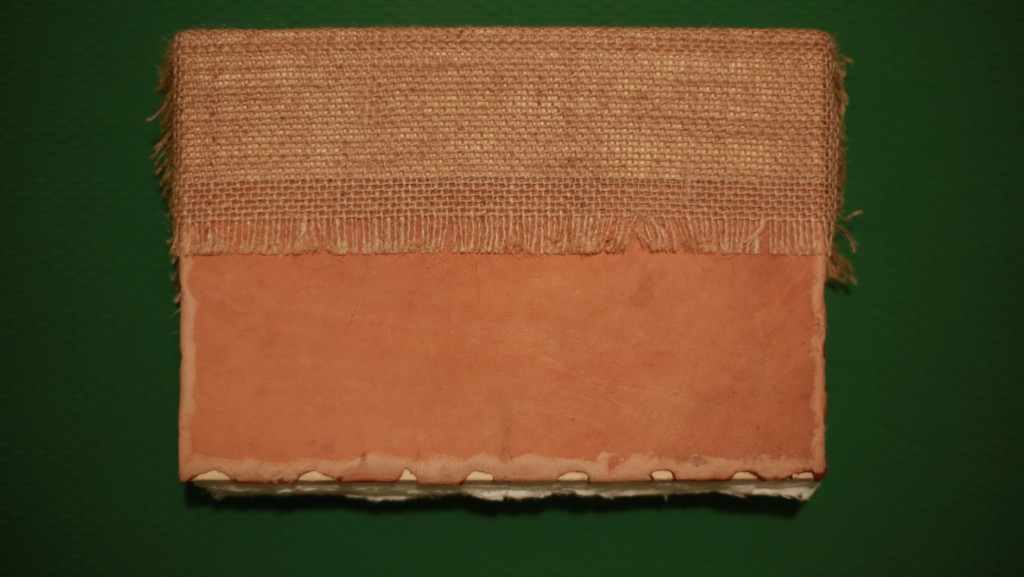
I placed the journal on a chromakey green piece of foam poster board and took stills of it using the 50mm, handheld. All told, the diary work took around 40 minutes.
And shooting was wrapped!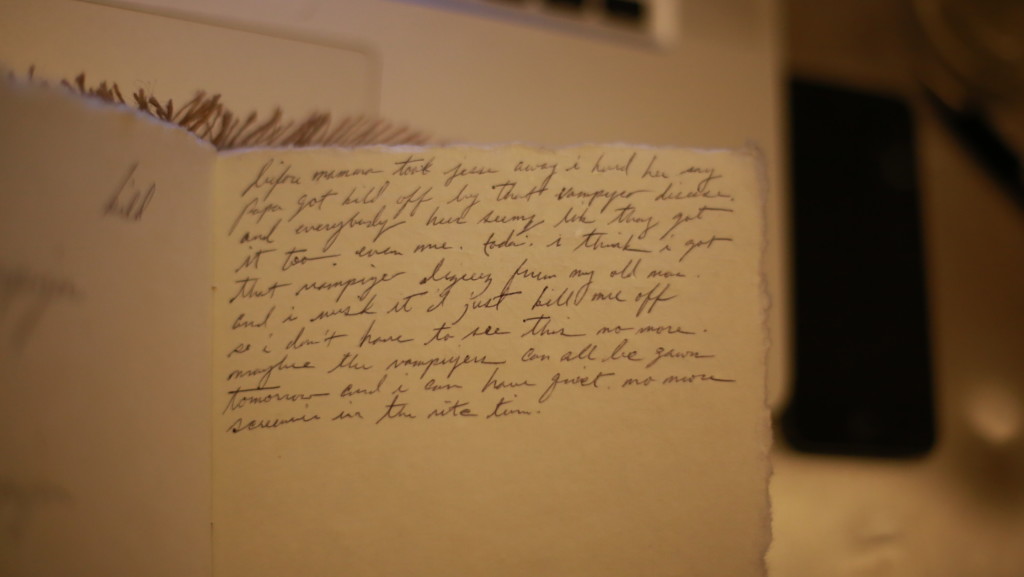 POST: THE POWER OF SCRIPT AND TIME
POST: THE POWER OF SCRIPT AND TIME
Timing the pitch in advance gave me well-defined parameters within which to work.
Friday, before a single frame was shot, I created a library in Final Cut X—my NLE of choice—which included events for Audio, B-Roll, and Studio Footage.
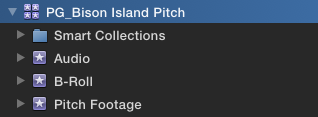
I added all the titles I’d written into the pitch to the timeline of a project I made within that library.
A sound designer friend of mine turned me onto a free piece of software called PaulStretch, which allows users to plug in a piece of music or a progression and stretch it infinitely.
I used PaulStretch to take open source tones and stretch them out to make longer synth-type sounds, which I combined and arranged to fit the desired mood. This took 2 hours and, boom: we had a soundtrack that I could manipulate to fit the finished piece!
If you’re in need of music quickly and aren’t a musician at all, I highly recommend PaulStretch as a creative tool.
Saturday, when we shot the studio pitch, I laid our final takes into my pre-made timeline. I then added red to-do markers, with notes identifying which B-Roll, graphics, or additional text animations would go where. This all took about 30 minutes, and saved me editing time because I knew where everything would end up.
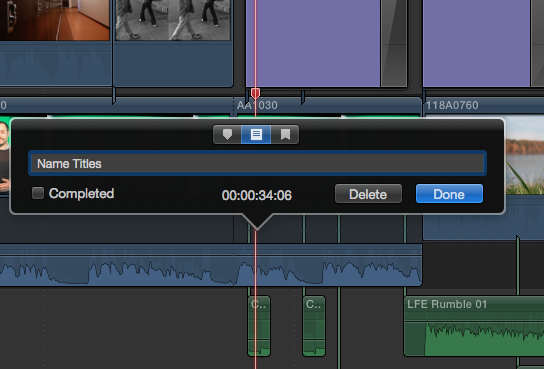
Sunday, I plugged in B-Roll and graphics, and arranged titles. Selecting takes and laying them in took no more than 1 hour.
From there, I could just polish. I allowed myself no more than 45 minutes to key out our studio footage and find its look. Black and white with the vignetted gradient seemed best.

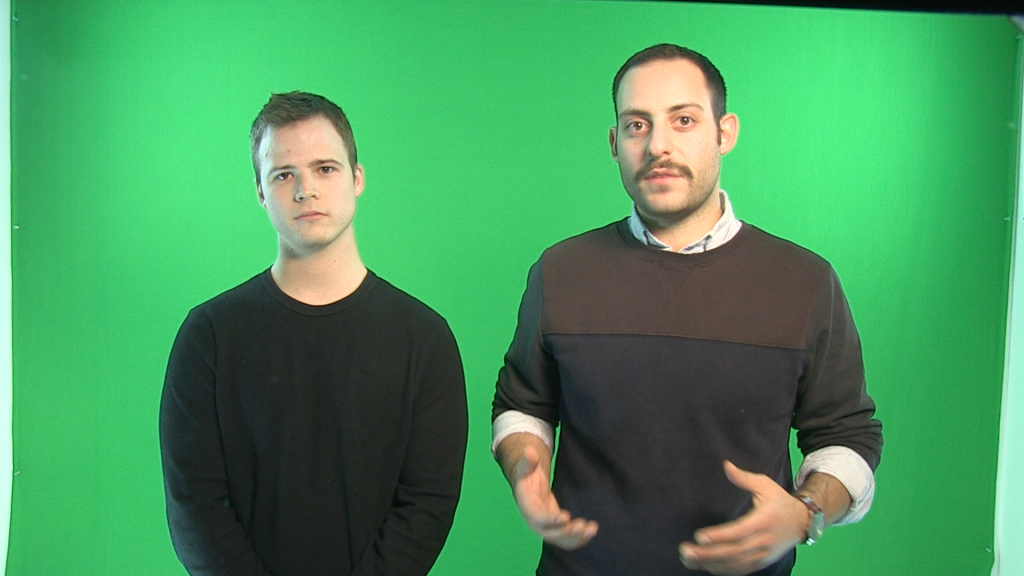 The rest of Sunday and Monday were spent trimming frames here and there, massaging flow, and color grading all the B-Roll. I did text animations for our lower-thirds and the final section Monday afternoon.
The rest of Sunday and Monday were spent trimming frames here and there, massaging flow, and color grading all the B-Roll. I did text animations for our lower-thirds and the final section Monday afternoon.
The bottom line: extensive pre-production enabled me to spend the bulk of my post-process enhancing, instead of searching.
I had time to enhance the soundtrack with “stingers”—sound FX to boost the impact of certain moments—and rearrange tones in the music so they fit each section’s mood.
I can’t emphasize this enough: when you don’t jump the gun on production and take the time to organize, the machine runs smooth and racing is easy.
But, did it work?
TESTING
Had we made a compelling video? Were we clear in our pitch? And, most importantly, did it appeal to horror fans? For this, I needed input from completely fresh eyes.
As I explained here, it’s invaluable to have a select group of people whose input you value. I reached out to 10 friends whose opinions I trust, and who had little to no exposure to this project beforehand.
Minimal exposure was important to ensure maximum objectivity. Friends are biased, so you at least need them to lack context, like a random viewer.
I made sure I reached out to those who historically don’t shy away from giving honest feedback. I also targeted a few friends who are even bigger horror fans than Michael or myself. I wanted clear indications of whether or not we were hitting the right genre notes.
The rest of my “committee” were artists, fellow filmmakers, and a few friends who appreciate film/tv, but might not be directly involved in production.
Here’s a great example of some honest, detailed notes I received from a long time collaborator:
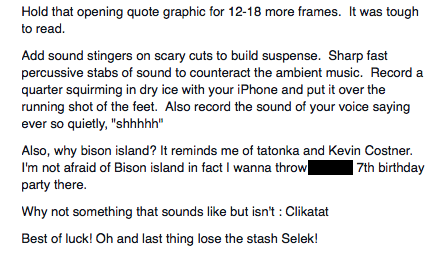
Okay, so the last couple are comical (maybe), but these are mostly blunt, to the point, and focused. This is what I needed paid close attention to. Also, the 7 year old is this critic’s son, and the stash in question is mine. It’s still here.
Remember, not all notes need to be this specific: a lot can come of something like, “This part felt weird,” or, “I got bored at this part.” Notes like that can make you look a little closer at your work.
I spent Tuesday morning sifting through the feedback. Some people will inherently suggest things that can’t be done—reshoots, etc. I focused on points that affected the overall flow and messaging.
For instance, I received a few notes saying the opening title needed to stay up longer and suggesting adding fades before and after the titles that break up each section. These notes confirmed suspicions I’d had, so I made the changes.
When receiving notes it’s important to take your ego and emotions out of the equation as much as possible. Especially with something like a pitch or promotional piece.
Unlike experimental art, a pitch is intended to hit certain notes and build interest in your subject. No one can nullify or validate that achievement more than audience members.
Bounce multiple people’s’ notes off of one another. Narrow down the ones that seem most pertinent to your piece and are truest to your vision.
I prioritized every note that came in based on doability, and gathered those that were common among multiple viewers. There were only a small few that I disregarded, and the rest I was able to accomplish without any feeling of compromise.
Adjusting for notes took about 3 hours and I can truly say the finished product would not have been as solid had I not consulted my “committee.”
After the notes, I exported the final file, gathered the remaining deliverables, and submitted.
It got in 24 hours before the deadline, and I finally got some sleep!
THE TAKEAWAY
As I write this post, we’ve made the Top-20 semi-finals. I hope this project will make the Top 5 (which you can help us do), and winning would be monumental for us. Ultimately, this experience has been valuable and gratifying so far!
Here’re the fundamentals of this post, and the philosophies I feel are essential when you’re creating a pitch or submission video for a competition:
Know what you need: Identify the key information you must relay in your pitch, how best to relay it, and the most efficient way to execute those needs in a timely fashion.
Know what you want: Decide what you want to convey, how you can stylyze the essential information in a way that’s unique to you, and prove you have a voice unto yourself.
It takes a village and people like to help: Reach out to those around you for input and guidance. People like to help and support, and they also make great brand ambassadors if your submission has a public voting round!
Listen to others: Don’t just reach out. Listen to what others have to say and take it to heart. You’re not just producing an original piece of art—you’re selling something. So you handle the art, and trust others on what sells and what doesn’t.
Understand time: Competitions don’t generally give the cushiest timelines. You’ll likely be in a race toward a rapidly approaching finish line. Be realistic with your scope and what you can reasonably create, given the time you have.
Know when to walk away. Not everything is worth your time and some efforts are wasteful. Your ultimate job when submitting to a competition is to submit—complete the project and get a foot in the door. Don’t forget the end goal, and know when to say something is done and ready.
Thank you so much for reading! If you haven’t already, please support us and vote for our Get the Greenlight submission, Bison Island!
Good work guys! Thnks for all the good info, putting this into action the next time there’s an open contest.
Thanks Julian! Much appreciated!
the bad audio would have made me toss your pitch
is it my pc or was the music really louder than the talking
which made it hard to follow what you were saying
am i too picky? i have done audio for almost 50 years and may have higher standards, and better hearing, than millenials do now.
Hi Joe,
Sounds like a personal preference.
Sorry you didn’t like the pitch!